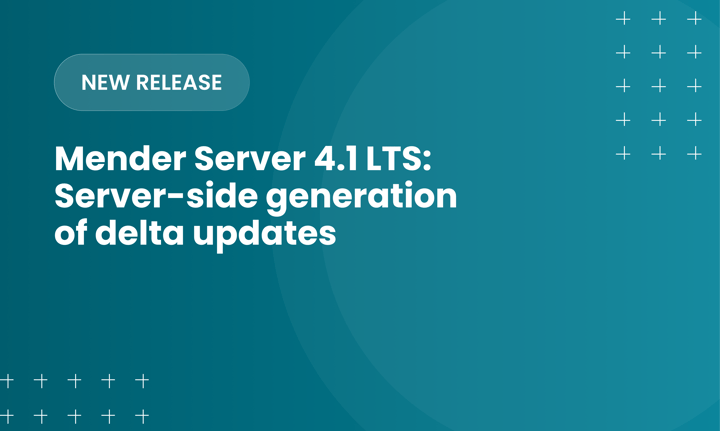The automotive industry is experiencing several disruptions simultaneously; electrification, carsharing, autonomous driving, and personalization fuel the definition of the Software-defined Vehicle (SDV). In the McKinsey report, Automotive R&D transformation: Optimizing gen AI’s potential value, the three major trends transforming R&D include:
- the fundamental shift from internal combustion engine (ICE) to electric vehicle (EV) technology,
- the introduction of software-defined vehicles with a central architecture geared toward consumers and
- the emergence of generative AI as a powerful technology that can completely reconfigure how R&D teams operate.
Before the rise of SDVs, once a vehicle left the factory, it was in a static state, limited by its hardware components with little room to improve performance or user experience. But now, software solutions built alongside hardware components enable continuous optimization – the core element, software together with hardware, underlying all three trends.
All major OEMs, Tier1s, and the broader industry are striving to stay ahead in this technology race, increasingly defined by software and Autonomous Vehicles (AVs). Especially for AVs, the winners will be those who get to market and scale a production-grade solution first.
The critical question for the automotive and autonomous vehicle industries is: how can you shorten the time to market and innovate faster in software and AVs to meet more demanding customer requirements?
Managing the growing complexity of vehicle software
Software solutions, alongside over-the-air (OTA) updates, are becoming mission-critical for vehicle manufacturers. Software and OTA updates offer OEMS the ability to continuously update firmware, software, and applications already in the field, significantly extending their capacity to improve new technology. When a vehicle manufacturer develops a new feature or software patch, it is sent directly to the vehicle without manual intervention. As such, across OEMs and product lines, firmware over-the-air (FOTA) and general over-the-air (OTA) updates are more frequently promoted as a headline feature and value-add for consumers – the delivery vehicle for new software.
Despite its promise and potential, the most challenging aspect of managing vehicle software is the increasing number of hardware and software component combinations. For example, modern SDVs contain up to 100 million lines of code, and this number is increasing. Additionally, manufacturers might revise a vehicle model yearly, changing some hardware components. These annual changes result in hundreds of new hardware components that need the software to go with them, which, in turn, will also require continuous updates.
For a single vehicle brand, the hardware-software-version-update complexity is multiplied by product line, vintage under support, and new releases. Then, multiply that by how many brands today’s automotive OEM owns and manages. The ability to perform updates remotely, test new software, and monitor processes directly is crucial to development and innovation within the automotive industry. Yet, the number of hardware and software components and configurations is also exponentially increasing.
Adding AI increases software complexity in autonomous vehicles (AVs)

The promise of AI in vehicles is a more advanced, capable, and safer driving experience via the faster, more accurate, and immensely iterative processing that technology can achieve, which human drivers (brains) cannot.
First, the development of autonomous vehicles adds another component – AI. And with that, there is another significant level of software complexity. A typical AV consists of:
- Subsystems: Subsystems, such as lidar, radar, and cameras, are best described as the sensors used by AI to understand its environment, just as human eyes and ears would function.
- AI framework: The AI framework is the infrastructure of the software and applications required to operate, including the operating system and all resources needed for the main AI application software to function.
- AI itself (core software, model, and data): As the driver's ‘brain,’ AI relies on these other components to sense its environment and act accordingly, using all the data it contains.
Layer on AI software development on top of the existing hardware-software configuration complexity illuminates that not only is managing vehicle software complex today, but it is only going to grow.
Then, for AI in vehicles to deliver its promise of a safer driving experience, it must be iterative. Deploying AI software enhancements remotely means manufacturers can greatly enhance safety features, sensor systems, and algorithms that can aid collision avoidance. However, the entire framework also requires and relies on continuous data consumption in real-time, algorithm updates or improvements, and a generative learning model.
In this scenario, an on-site software update to address an AI bug is untenable. For AI in AVs, OTA software updates are indelibly connected. OTA updates allow for adding new features using operational insights from AI-based learning, which is required for AI to improve continuously. Without continuous improvements and associated updates, AI would remain static.
Why a CI/CD philosophy is required to compete
“Embarking on this industrial revolution via technology, today’s largest enterprises are and must undergo a cultural revolution. They must embrace software and technology as the linchpin for not just their business’ success but survival.”
Forbes, How To Compete In A Software-Defined World
For over a decade, cost reductions, increased security, and lower risk justified OTA updates. For example, suppose a vehicle problem is due to a software bug, a bad update, or a cyber attack. In that case, OTA updates can be rolled out at scale, delivering a faster, more critical path than costly physical recall processes. Leveraging OTA updates could impact hundreds of thousands of vehicles and quickly mitigate security or safety issues. By remotely deploying security patches and updates, automotive manufacturers can safeguard SDVs and autonomous vehicles using encryption, authentication, and other secure protocols through OTA updates.
Today, OTA updates are a fundamental enabler of continuous innovation. On a smaller scale, the automotive industry has already evolved to embrace software within its hardware mindset—OTA updates.
However, to realize the future potential of technology within vehicles, automotive OEMs must adopt a continuous integration (CI) / continuous deployment (CD) philosophy. A CI/CD DevOps pipeline—shortening software iteration cycles to learn and innovate faster—is the foundation for competing in the new automotive marketplace.
To do this in practice and realize the potential of SDVs and AVs, OEMs must implement continuous and short iteration cycles from their software developers to production vehicles to meet and exceed market demands.

Preparing today to manage tomorrow’s software
Software is transforming customer experience and is at the core of competition across the automotive industry, particularly regarding SDVs and AVs. To meet customer demands, automotive OEMs are looking for ways to shorten their time-to-market and increase innovation in software, SDVs, and AVs.
In the future, faster vehicle innovation, keeping up with demand, and staying ahead of the competition will all be critical drivers for automotive software development. Vulnerabilities, quality, and safety are all key considerations when delivering updates in the SDV/AV industry, as they could affect tens of thousands of people. The process requires robust software verification and validation to ensure that delivery and engagement are defect-free. Underlying the future of the automotive industry is efficient and effective software management. A fundamental part of software management strategy is robust and secure OTA updates.
Learn more about innovating with software in the future automotive industry.
Recent articles
The differences between the US FDA’s device approval process and the EU’s medical device regulation (MDR): An essential dual-compliance framework for global manufacturers
Why OTA updates are now mission critical for future-proofed device lifecycle management
What’s new in Mender: Server-side generation of delta updates
Learn why leading companies choose Mender
Discover how Mender empowers both you and your customers with secure and reliable over-the-air updates for IoT devices. Focus on your product, and benefit from specialized OTA expertise and best practices.




